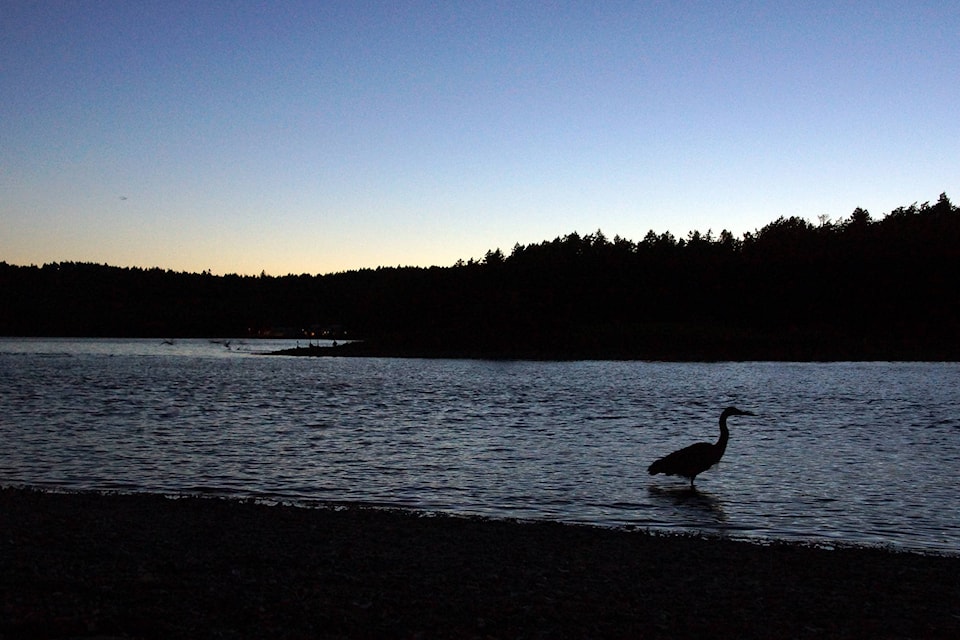A Greater Victoria naturalist says we need more than ever to pay attention to local birds in light of a study showing plummeting bird populations across North America.
Jacque Sirois, of Oak Bay, is clear that he does not want to start a war against dogs. But as representative of the Friends of Victoria Harbour Migratory Bird Sanctuary, he says it’s necessary to have a “smart conversation” about dogs going off-leash along Victoria shorelines – which fall entirely under federal purview.
The Victoria Harbour Migratory Bird Sanctuary covers the beach from the Portage Inlet to Ten Mile Point, and under federal regulations, dogs are not allowed off-leash below the high water mark.
RELATED: Dogs return to Willows Beach, but rules could change
“The bird sanctuary has been ignored for decades. The regulations have never been enforced,” Sirois said. “And now, in light of the declining bird numbers on our coast… we feel that some of these regulations should be enforced.”
Recently an extensive study published in the journal Science revealed that the number of North American birds has dropped by three billion since 1970 – a loss of about 30 per cent in just under 50 years.
The worst declines were seen in sparrows and grassland birds, but from taking monthly coastal surveys, Sirois says it’s clear migratory waterbirds are also depleting.
“In Greater Victoria, many of the species – their numbers are plummeting. Many of the species are also at risk,” he said. “Municipal bylaws should be harmonized with migratory bird sanctuaries, but in a reasonable manner – meaning that some areas could remain open to dogs but some could definitively close.”
RELATED: Three billion fewer birds in North America than in 1970, study finds
Greater Victoria is not without bird conservation efforts – between the Esquimalt Lagoon, Shoal Harbour and Victoria Harbour sanctuaries, there is plenty of work being done to protect the area’s birds. But that doesn’t necessarily help the species when dogs come along, Sirois says.
The federal government says pets pose a risk to birds – particularly migratory ones – when they are scared from their habitats.
“Birds subject to constant harassment may be unable to store sufficient fat to successfully complete their migrations, survive the winter, or to arrive at their nesting sites in good breeding condition,” says Marilyne Lavoie, spokesperson for Environment Canada. “For example, to avoid interactions with dogs, some species will move from preferred feeding or resting areas to less suitable habitats.
“Disturbance by dogs at specific times such as low tide, may also result in a high cost to the birds due to the inability to access to food when it is most abundant and available.”
The District of Oak Bay told Black Press Media it is considering options to restrict dogs on parts of Willows Beach, although the details have not yet been confirmed.
Sirois would like to see the south end of Willows Park beach – a stretch of coastline near the Bowker estuary – closed off to dogs. But Clover Point, which falls under the the City of Victoria’s jurisdiction, is another popular birding location.
READ ALSO: CRD to conduct harbour bird survey 22 years after original
RELATED: Oak Bay considers dog ban on portion of Willows Beach
He says it will take cooperation from Victoria, Oak Bay, Esquimalt, View Royal and Saanich to start taking bird protection seriously.
“We’ve got remarkable wildlife in the city and we have an ideal place to connect with nature,” he says. “We want to enhance the situation, not let it deteriorate.”
nina.grossman@blackpress.ca
Follow us on Instagram Like us on Facebook and follow us on Twitter.
